Biophysical agents: compression and hydrotherapy
1/38
There's no tags or description
Looks like no tags are added yet.
Name | Mastery | Learn | Test | Matching | Spaced |
|---|
No study sessions yet.
39 Terms
What are the indications for compression?
- control or minimize edema (post traumatic, burn, CVI, lymphedema)
- improve venous and systematic circulation
- enhance healing of leg ulcers/wounds
- reduce orthostatic hypotension
- prevent thrombophlebitis
What are the contraindications for compression?
- acute inflammation or trauma
- acute derm infections, fragile skin
- acute DVT
- edema secondary to cardiac/kidney dysfunction
- acute fractures
- HPT
- lymphedema
What are some potential integumentary complications from compression?
- swelling in adjacent quadrants
- skin breakdown
- ischemia (numbness)
What is a potential musculoskeletal complication from compression?
decrease in ROM of involved joints due to immobility during compression
What is a potential cardiopulmonary complication of compression?
shortness of breath from fluid overload (first symptom)
What is a potential psychological complication of compression?
sensation of feeling "trapped"
What is intermittent pneumatic compression?
inflatable sleeves to rhythmically squeeze the limbs and improve blood flow, helping prevent blood clots and reduce swelling
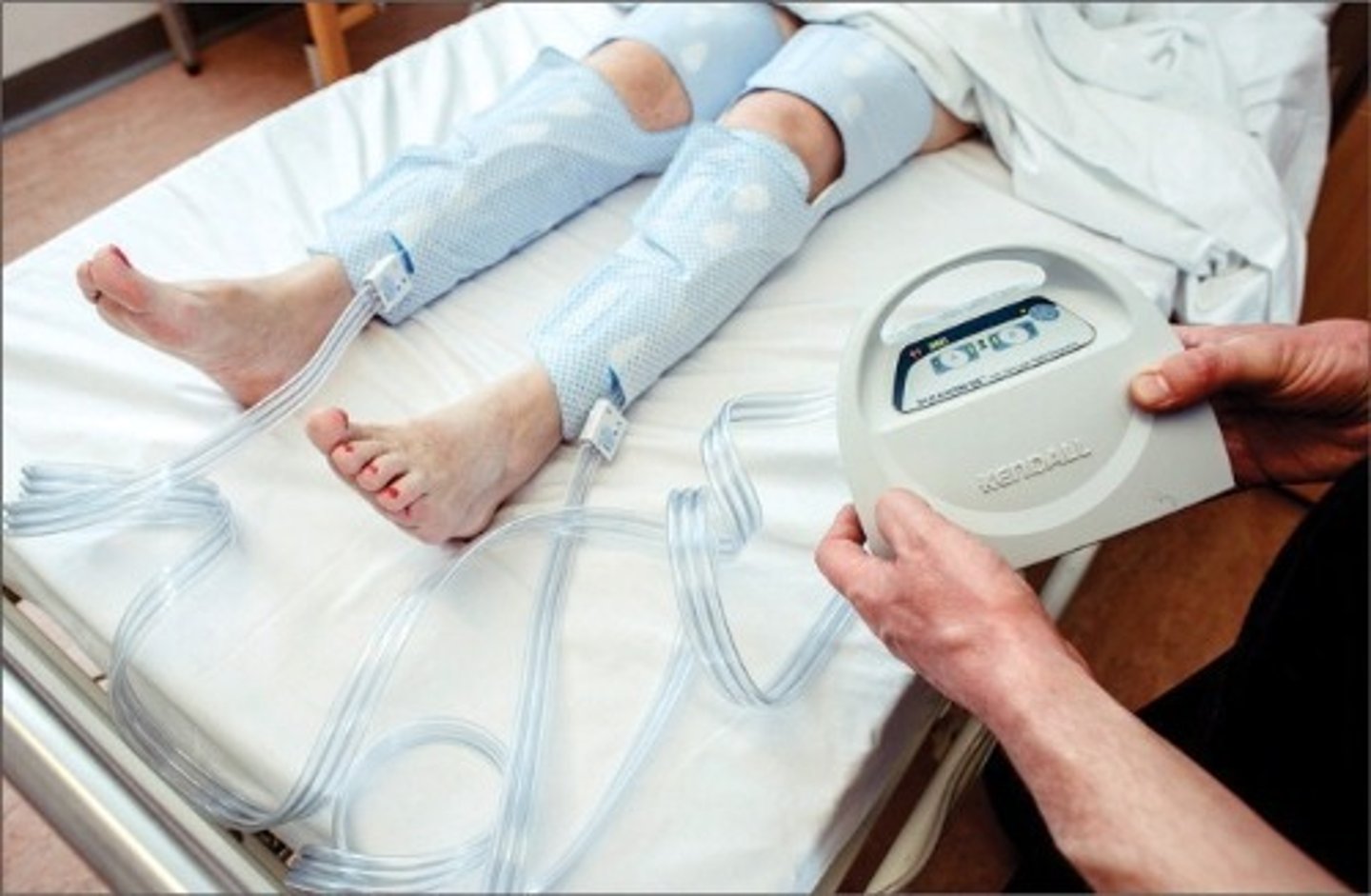
How is the patient positioned for intermittent pneumatic compression?
positioned for comfort with involved extremity elevated
What needs to be placed on the limb under the sleeve for intermittent pneumatic compression?
stockinette
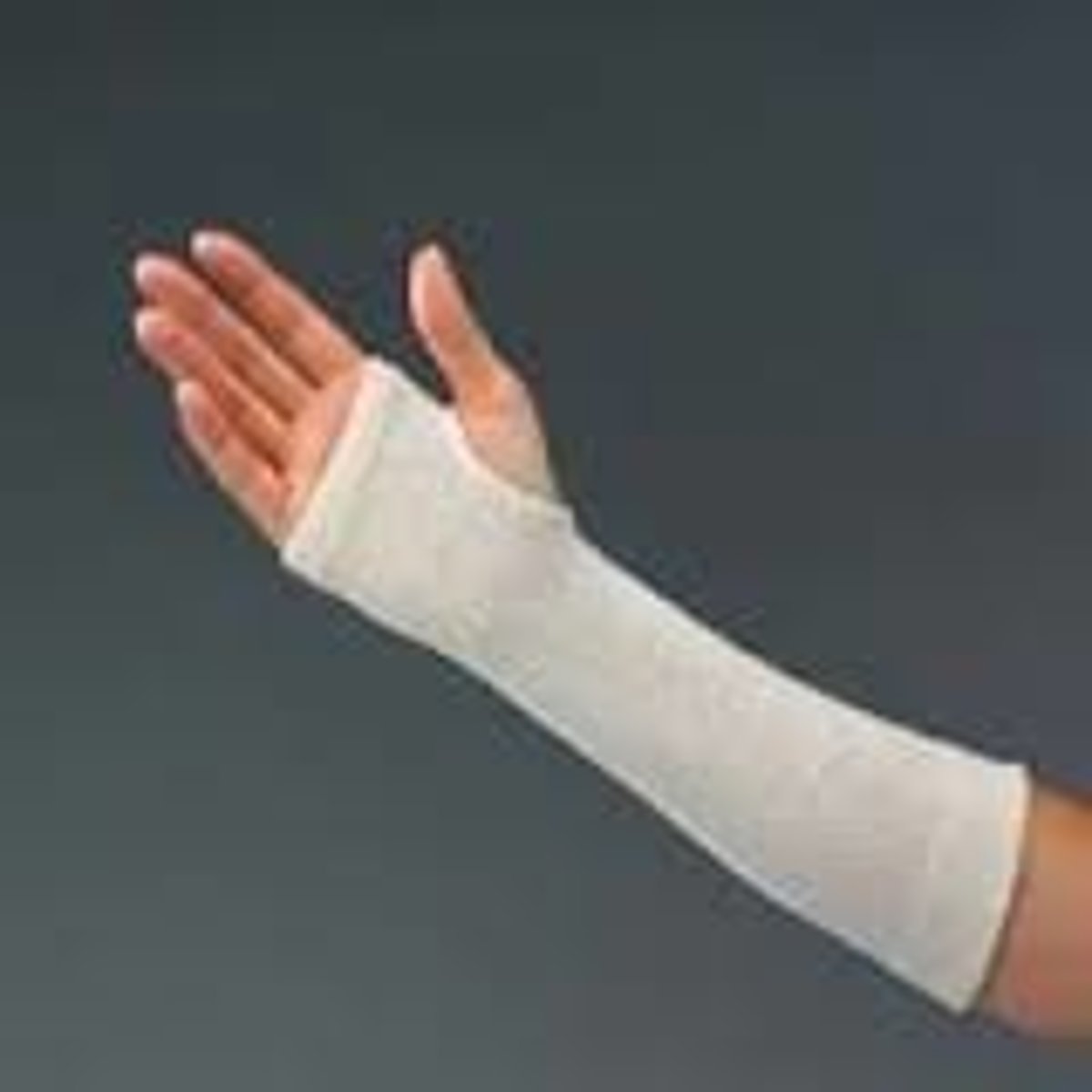
What is the ideal duration of intermittent pneumatic compression?
2 hours (rest after first hour to move around)
What is required after intermittent pneumatic compression or cryocuff?
aftercare - wrap involved part in ace-wrap of tubigrip to retain girth reduction
What is the range of pressures from low to high of lymphedema, LE edema, venous ulcers, stump reduction, hand edema from lowest to highest?
1. lymphedema (very low)
2. hand edema
3 and 4. stump reduction/LE edema
5. venous ulcers (high)
What is a cryocuff?
combines cold therapy and compression to reduce pain and swelling, typically used after surgery or injury

How long is the ideal time for cryocuff?
around 30 min (wait atleast 30 minutes in between)
What is compression wrapping?
application of elastic bandages to a limb or body part to apply pressure, helping reduce swelling, support injured tissues, and improve circulation.
What are the purposes of compression wrapping?
- provides support and warmth
- impact on edema
- secure dressings and splints
- companion to IPC
Does compression wrapping limit motion?
minimally (more of a reminder not to move)
What are signs and symptoms of restricted circulation?
- pallor
- erythema (redness)
- cyanosis
- tingling or numbness
- pain or hyperesthesia
- swelling
- decrease in temperature (cold toes or fingers)
What is important to measure before and after compression treatment (atleast for first, then weekly)?
limb volume and girth
How do you measure limb volume?
place in special container with preset volume of water and measure water displacement (how much comes out)
Is limb volume or girth more clinically useful?
girth (but not as quick)
How do you measure limb girth?
use skin pencil to mark and then take circumference of limb at various points up extremity
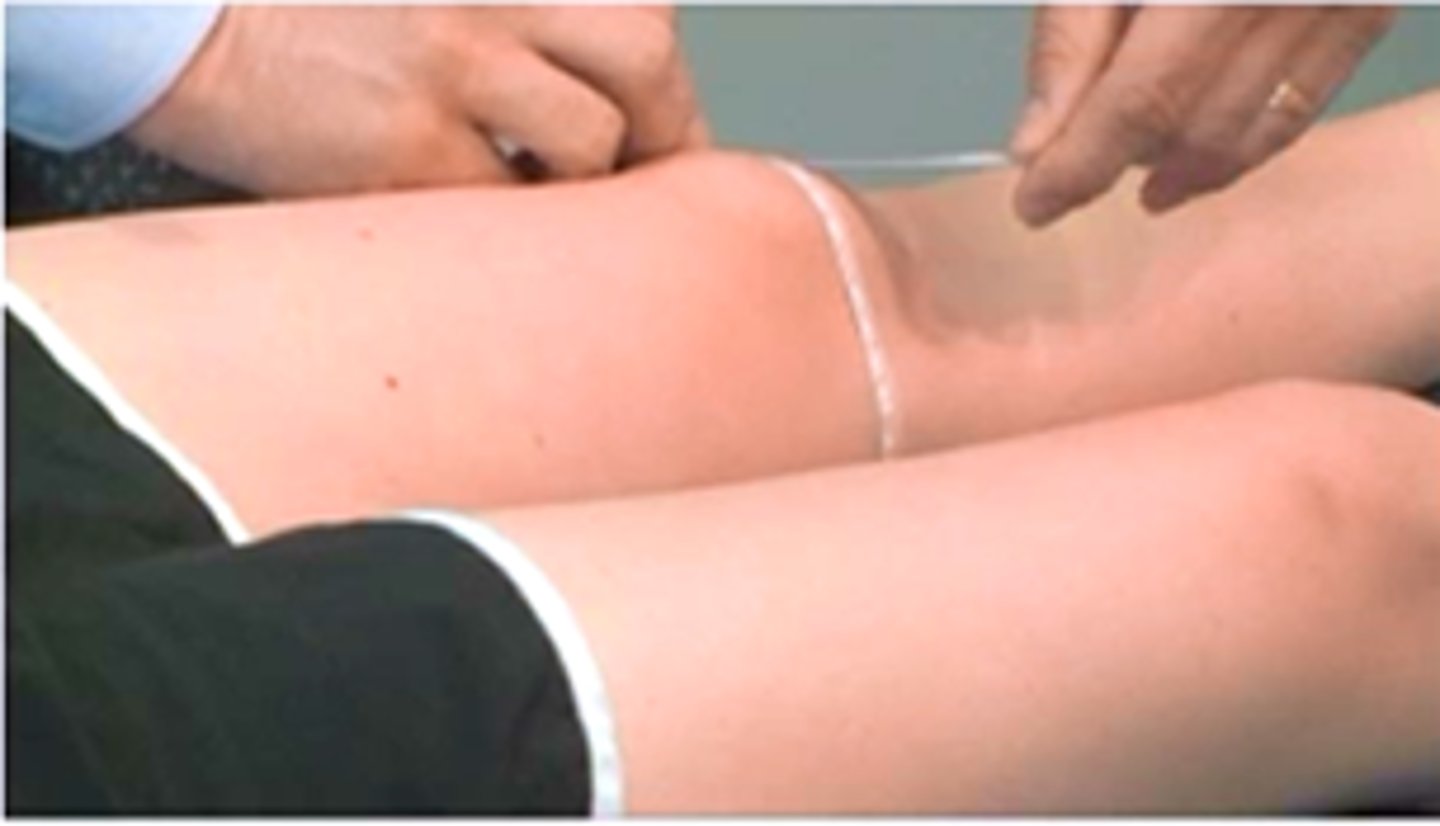
What is the definition of hydrotherapy (for PT)?
external application of water in solid, liquid, or vapor form for healing processes that we utilize for physiological properties of water
What are indications for whirlpool as PT?
- exercise (resistance/assistance)
- thermotherapy (pain relief)
- cryotherapy (pain relief)
When would you use an extremity tank?
distal segments (body part dependent)

What are considerations for a Lo-Boy?
sit with LE-fully extended but need triceps or lift
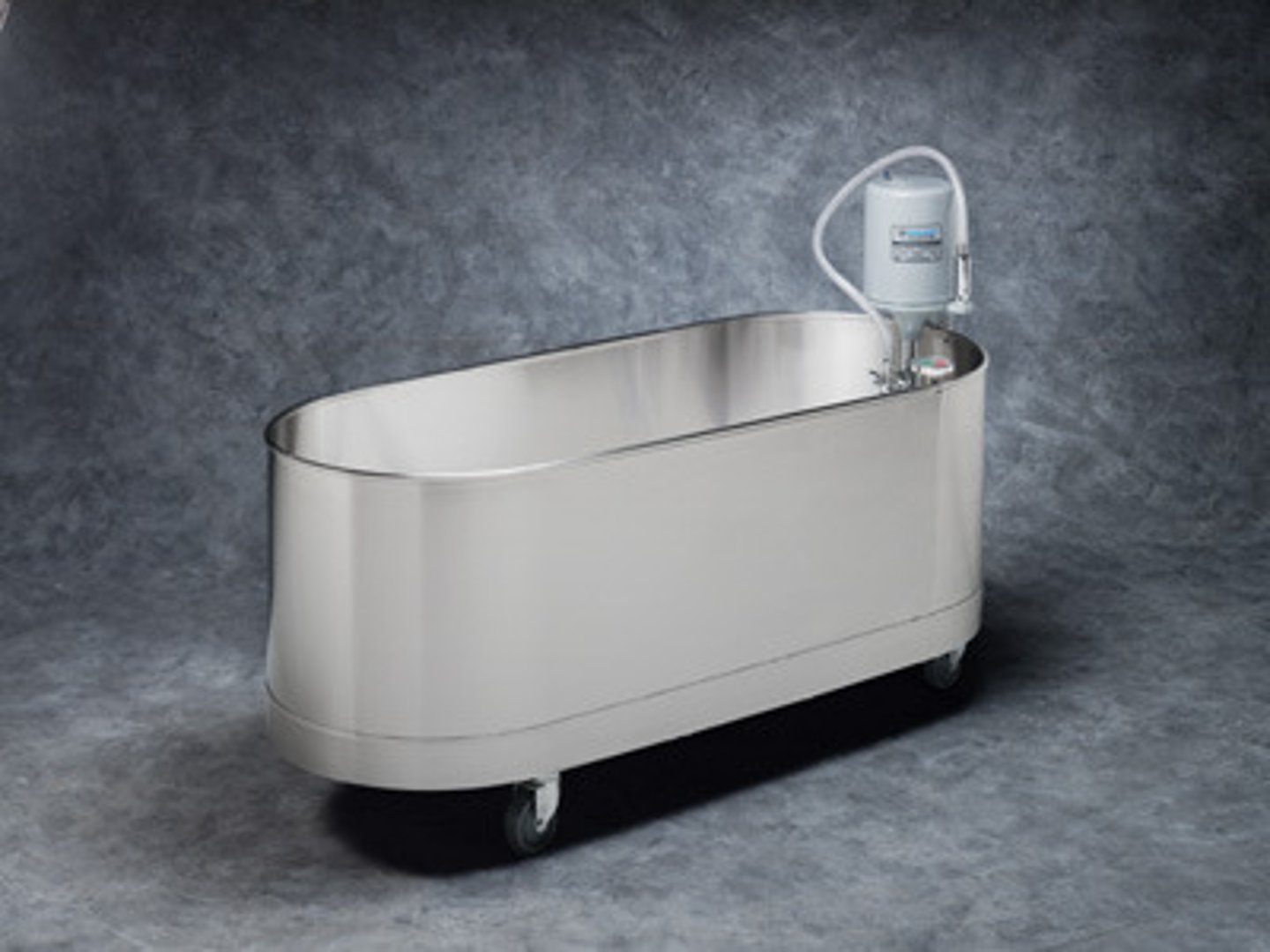
What are considerations for a Hi-boy?
need full flexion in hip/knee; must climb in

What are considerations for a hubbard tank?
total body, prone/supine, hydraulic lift to 1/4 ton (lots of water)
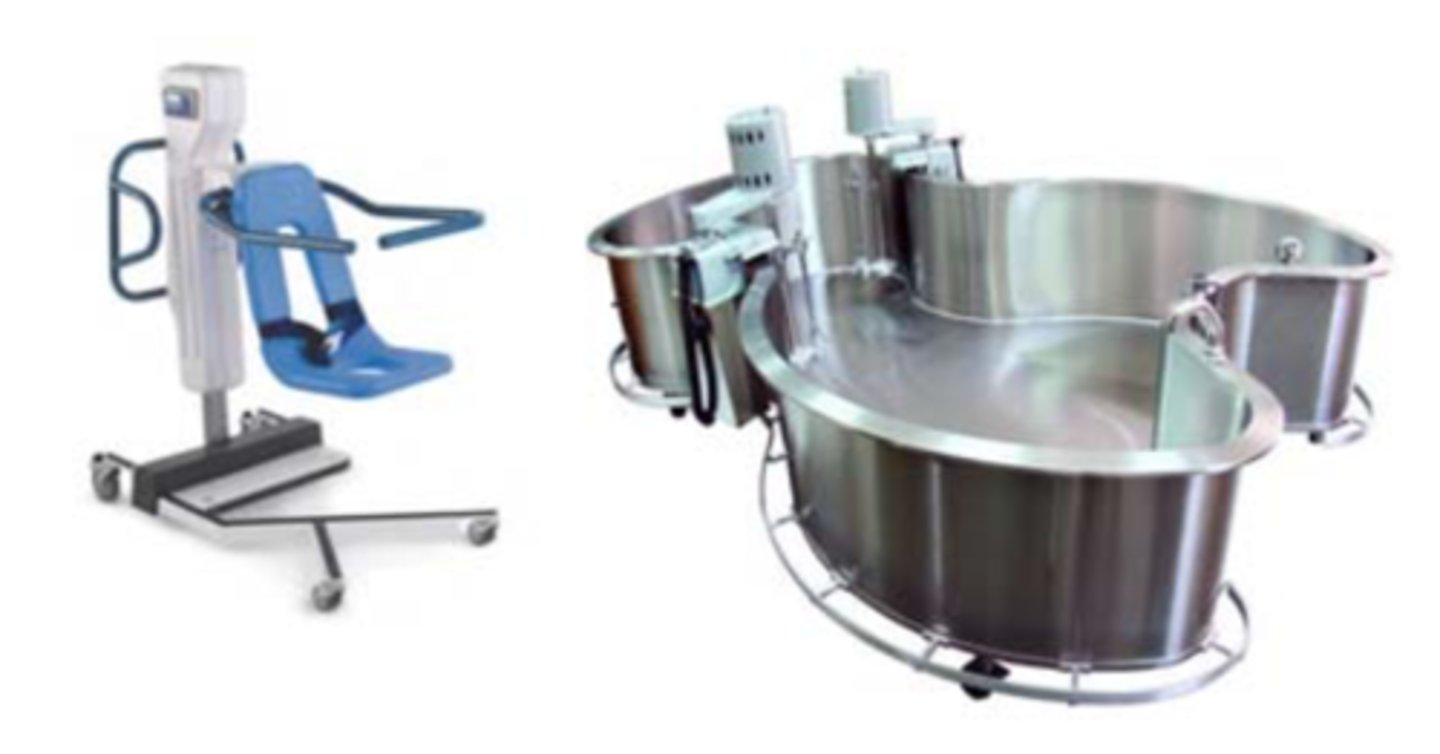
What would the temperature be for heat treatment?
98-104 degrees
What would the temperature be for cold treatment?
45-60 degrees
What would the temperature be for wound treatment?
96-100 degrees
When would there be an additive used in the water for hydrotherapy?
open wound-infected
How long does the patient stay in tub for heat treatment?
20 minutes (to vasodilate)
How long does the patient stay in tub for cold treatment?
until numb
How long does the patient stay in tub for wound treatment?
soak 10, agitate 10, debride 10
How long does the patient stay in tub for exercise treatment?
as tolerated 10-30 min
What are precautions for whirlpools?
fainting, falls , drowning, electrocution
What must be included in documentation for whirlpools?
- tank style or size
- water temp
- frequency or duration
- additives
- patient transfer ability
- use of agitation
What are standard precautions based on?
assumption that all blood and body fluids are potentially infectious